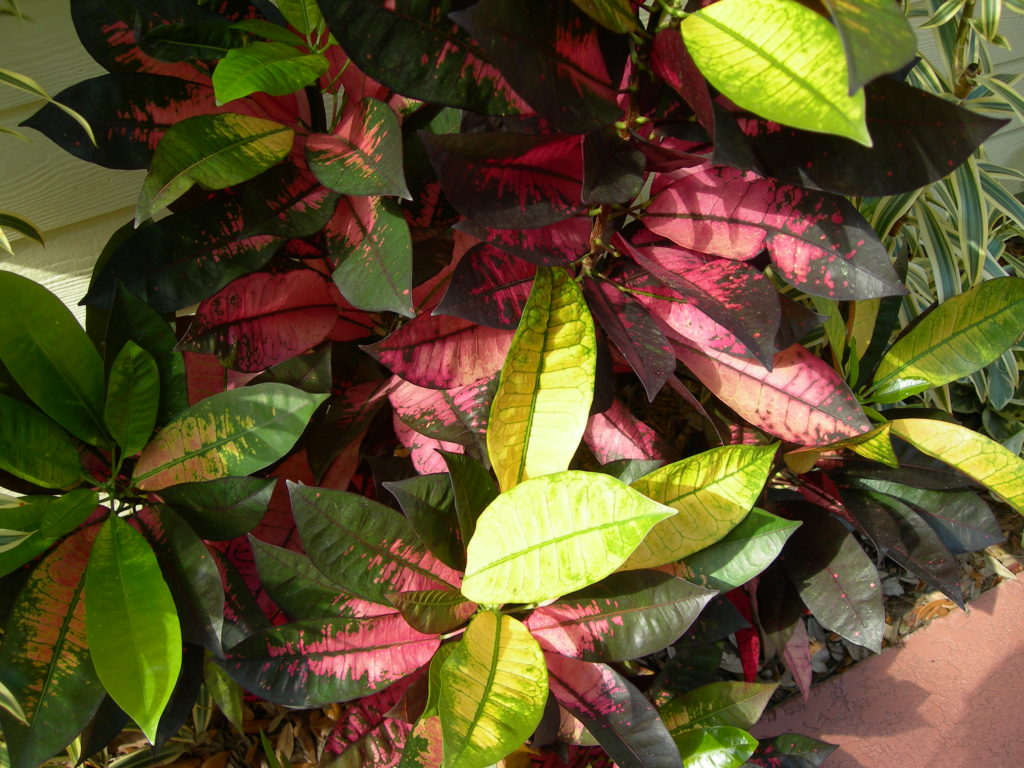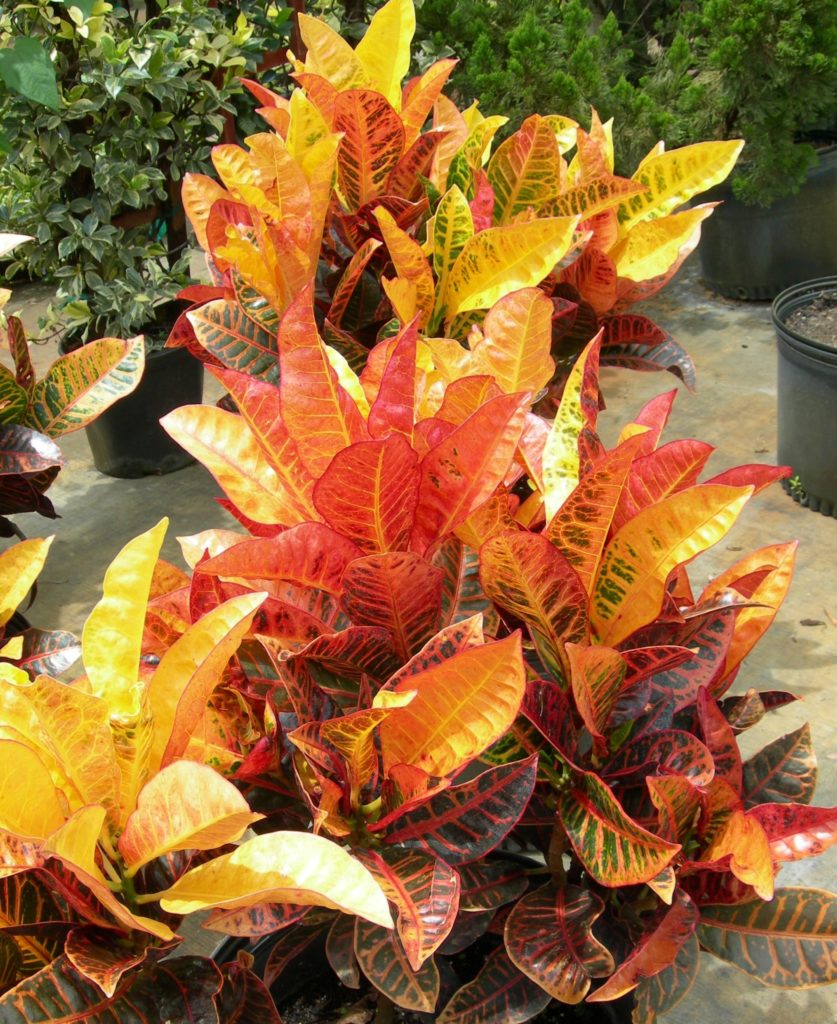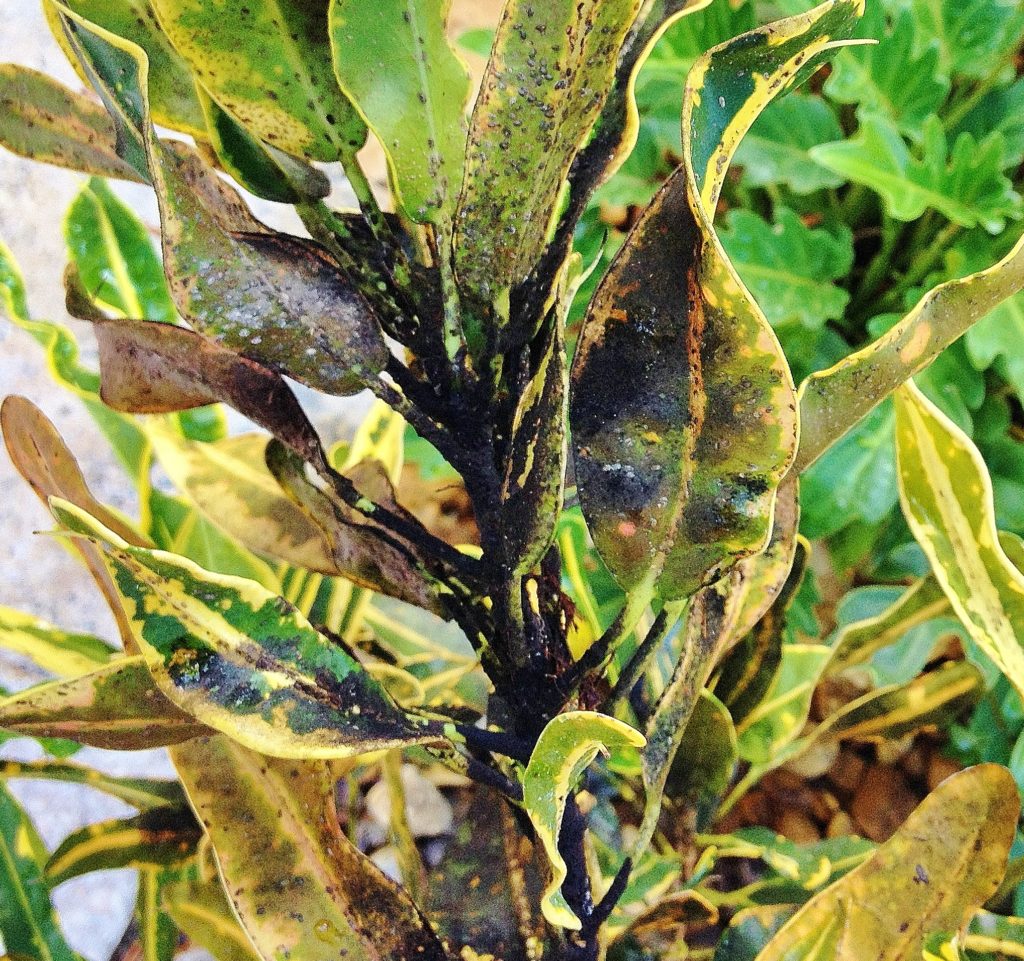Crotons are among my favorite plants for the landscape. I have heard some folks say they don’t like crotons because they are old-fashioned, have no blooms, and are challenging to grow. It is true crotons have long been favored by gardeners in warm climates, and they are often planted in the wrong locations, but when used in the right place, crotons are stunning. Crotons are great plants for outside and interior gardens.

Crotons or Codiaeum variegatum, as they are known by horticulturists and scientists, are evergreen shrubs native to Malaysia and islands of the eastern Pacific. They belong to the plant family Euphorbiaceae and exude a sap that may cause dermatitis when cut. Croton leaves are variable in size, form, and color; there are hundreds of varieties. And they do flower though the flower is small, star-shaped, and insignificant – it is the leaves that are the star of the show.
The right place in the landscape for crotons is where the soil doesn’t hold water for long periods; crotons do not grow well in wet ground. They do, however, require a fair amount of light. Many croton varieties need full sun for at least a portion of the day to maintain brilliant color in the leaves; however, a bit of shade during the hottest part of the day is suitable for most varieties. Too much sun will bleach the color out of the leaves, and too little will cause the leaves to have more green.

Crotons are tropical plants; frost or freezing temperatures can cause leaf drop and damage the shrubs. Choose a location where they are protected from cold north winds, or a cover can be easily installed if temperatures drop below freezing for any length of time.
These are easy-to-grow plants. Crotons are moderate feeders but do require regular applications of nutrients. Use a slow-release product several times a year. Once established, they are moderately drought tolerant and only need additional watering during the driest weather. Mulch crotons well to suppress weeds and root-feeding nematodes and conserve moisture.
Crotons are as variable in ultimate size as they are in leaf form. However, most are good-sized shrubs and can reach 5 to 18 feet in height if not pruned. Mature crotons are vase or “V” shaped, so plant in an area with plenty of room to grow. That is not to say they shouldn’t be pruned; they can, but prune by hand to shape as necessary; crotons are particularly ugly when sheared for formal hedges.
Pests are generally not a problem for crotons. However, they may occasionally be bothered by mealybugs and scale insects, including green croton scale. In April 2008, a new insect species was discovered on crotons in a commercial nursery in Monroe County, Florida. The insect was identified as an exotic soft-bodied scale insect new to science.

It is now named the Green Croton Scale. This new scale is now found throughout South Florida on many plants, including landscape shrubs and trees and native plants and fruit trees. The scale moves from location to location with the movement of plants, so be sure to carefully inspect any new plant before bringing it home.
Scale insects are prey for several predators that control the pest population. However, this new croton scale is very prolific and causes significant damage, including leaf drop, plant decline, and death. Pesticides may be needed to control the green croton scale until efficient natural enemies are either found or build up populations to control the pest.
This column first appeared in the Treasure Coast Newspapers.
Leave a Reply